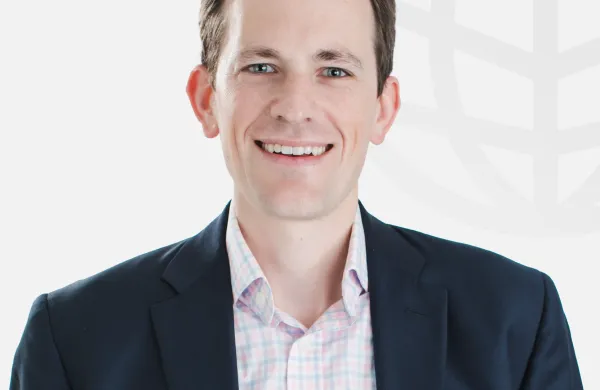In April visitors to chase.com, J.P. Morgan Chase & Co.'s online banking site, found an eye-popping offer on their screens: Pay a bill electronically and collect $5. Pay your bills online for three months and pocket up to $150.
The response was electrifying. J.P. Morgan Chase, which already had more than 2 million customers banking online, attracted at least 20,000 new accounts in April, market researchers estimate.
"Our offer created a tremendous buzz," says J.P. Morgan Chase executive vice president Yawar Shah. "These services enable us to wow customers in ways that I've never seen before in this industry."
Perhaps J.P. Morgan Chase should not have been so surprised. The giant New York City bank is hardly alone in pushing its online program so aggressively -- or in sparking such demand. In February 2001, Birmingham, Alabamabased AmSouth Bancorp introduced electronic bill-paying with the promise that it would be free for life; over the next three months, customers signed up at the rate of 1,000 a day, ten times the previous pace. And last year Bank of America Corp. decided to eliminate its $5.95 monthly fee for electronic bill-payers. More than 3 million customers have since flocked to BofA, which, with 6 million active online customers today, is No. 1 in the world.
Price cuts and giveaways to spur online activity? Are these banks engaged in some latter-day Internet insanity -- a throwback landgrab for market share with little hope of ever turning a profit? Quite the opposite, to hear them, and their competitors, talk. Many bankers were once caught up in New Economy euphoria, creating stand-alone Web operations like Bank One Corp.'s infamous Wingspanbank.com. Today they see online banking as an essential part of an integrated retail package, a marketing channel that, managed smartly, and with enhancements like bill-paying, can give them a crucial edge over rivals.
"Perhaps our greatest competitive advantage lies in our online prowess," declares Eugene McQuade, president and chief operating officer of FleetBoston Financial Corp., which by one measure may be the most successful major bank in the world at bringing its customers online: 72 percent of its 5.3 million retail clients have enrolled to use fleet.com.
Up and down the industry, retail banking has been thriving, the beneficiary of both low interest rates that spurred record mortgage refinancings and the newfound caution of investors, who, wary of stocks postbubble, are parking their money in bank CDs, annuities and other safe investments. And online services -- from commercial banking giants like BofA to niche players like the 175,000-member Digital Federal Credit Union in Marlborough, Massachusetts -- are boosting banks' efficiency, marketing prowess and, most critically, their profitability.
Why? Online activities are cheaper, for one. Industry researchers and consultants estimate that the average online transaction costs a bank about 20 cents, versus $2.30 if handled by a call-center operator and $3.35 by a branch teller. Even automated teller machine withdrawals, at 25 cents, are more expensive.
But it's not just cost reduction. Bankers say that once clients go online with their basic checking accounts, they tend to maintain bigger balances, use more services and stay loyal to the institution longer than off-line customers. That all adds up to a healthier bottom line.
"We are telling the marketplace and investors that we intend to grow revenues in our consumer franchise 7 to 9 percent a year and earnings per share 10 percent, and they want to know if that's sustainable. Online banking is a big part of the story," says Barbara Desoer, president of consumer products at BofA, whose consumer bank boosted profits 10 percent in the first half, to $3.5 billion. "The question is, how will we differentiate ourselves? We believe we have a head start and a competitive edge."
Online banking has long had an obvious allure. The Internet is an ideal medium for financial services -- a business that revolves around digital data and high-speed communications and that can operate at least as effectively, and far more economically, when it minimizes its dependence on people and offices. But Web finance, like all things Internet, was overhyped and oversold -- particularly online brokerage and trading. Financial institutions did bring millions of customers online, but many of their freestanding e-ventures, such as Wingspanbank and Citigroup's E-Citi, failed to turn profits and, as the boom fizzled, were folded back into the companies' main business units.
New Economy business plans may have been shelved, but consumer demand for convenience grew apace. "Banking is like bread and butter -- something people need every day," says Lloyd Darlington, president and CEO of technology solutions at BMO Financial Group, the Toronto-based parent of BMO Bank of Montreal and of Harris Bankcorp in Chicago. "They're always going to need a place to put their money, a term [savings] deposit, credit, a way to send money to other people. None of that is cyclical."
Those needs increasingly can be met by online services. "Our customers are demanding more convenience and control over their financial affairs," says J.P. Morgan Chase's Shah, who heads regional banking operations including the Internet, ATMs and call centers. "We are listening actively and responding to those desires increasingly via the online channel."
The online market is big, and its potential is enormous. According to Needham, Massachusettsbased TowerGroup, about 30 million U.S. households are banking online. That's 43 percent of the 69 million that have Internet access -- an indication of how much room there is to grow. Electronic bill-paying has become one of the fastest-growing Web services, right behind auctions and dating, according to Reston, Virginia, research firm ComScore Networks. But just 7 million customers are paying bills using their online bank accounts, meaning that banks have only begun to scratch that surface.
Comparing Web use to another electronic service, automated teller machines, gives a clear indicator of the potential for Internet banking, says Matthew Lawlor, CEO of McLean, Virginiabased Online Resources Corp., which provides outsourcing support to small and medium-size institutions.
"We've mapped the growth of online banking since 1996 against the growth of ATMs that began in 1980, and the adoption curves are almost identical," says Lawlor. After six years, both were at about 20 percent. "That tells me we're well on the way to mainstream adoption -- today more than 70 percent of checking account customers use ATMs." ATMs, of course, merely revolutionized retail banking.
GROWTH PROSPECTS ALONE DON'T EXCITE BANKERS -- it's the potential profitability. Despite their obvious successes, none of the major banks comes out with a clear statement of earnings from online activities. One reason is that they like to manage and portray their retail operations as a fully integrated business.
"Our customers see us as one brand, not separate businesses," explains Richard Kovacevich, chairman, president and CEO of Wells Fargo.
Thus, San Franciscobased Wells Fargo doesn't break its online results out from those of its consumer bank -- even as it boasts that it was the first major U.S. bank to open up on the Internet, in 1995, and now ranks second to BofA, with 4.2 million active users, 38 percent of its customer base. Similarly, there is no profit-and-loss statement for bankofamerica.com, or for Citigroup's citibank.com or Bank One's bankone.com.
But Kovacevich and his industry peers insist that online customers are profitable, and in many cases far more so than the average client. Therefore, the more that go online, the better for the bottom line.
Charlotte, North Carolinabased BofA has been the most forthcoming with per-account data. It says that an online customer's profitability begins to surpass that of an ordinary client after one year of enrollment; by the 31st month the e-customer is 21 percent more profitable. With 37 percent of BofA's retail households classified as active users -- going online at least once every 90 days -- the bottom-line impact surely adds up.
"The key to the profitability of retail relationships is deposit and loan balances, and online customers' balances are significantly higher," notes BofA consumer products chief Desoer. Her average online customer's loan and deposit balances are 45 percent and 35 percent higher, respectively, than off-line users', she says.
BofA also confirms that Internet clients cost less to serve because they are self-sufficient. They visit branches less frequently than the off-line clientele, and they place 30 percent fewer calls to telephone centers. They also tend to be more satisfied than other customers and less likely to take their business elsewhere.
Bank attrition rates are no more transparent than online-segment disclosures, but at least 10 percent of all customers close their accounts in a typical year. Two years ago Wells Fargo revealed that its bankwide churn rate was 14 percent. Among online customers the rate was 7 percent, and half that again for its 1.2 million electronic bill-payers. Bank of America says that its more than 2.6 million bill-paying customers close accounts at one fifth the average rate.
"In measuring payback from these systems, the greatest value is in retaining customers," says Lehman Brothers large-cap bank analyst Brock Vandervliet. "When they add products like online bill-paying, users become increasingly reluctant to change banks. And when banks reduce customer churn rates, consumer banking becomes more profitable."
At FleetBoston, online customers' attrition rate is said to be one third that of unwired clients, and their deposit levels are two to three times higher. "The behavioral characteristics of online users are vastly superior," says COO McQuade.
Selective disclosures are all that analysts have to go on. But Alenka Grealish, manager of the banking group at Boston-based research firm Celent Communications, says that BofA's numbers are especially impressive: They are based not on a random statistical sampling but on an extensive time-series analysis of 300,000 accounts, dating back more than three years. "The results are pretty profound," says Grealish. "They show causality."
Indeed, these findings have since been reinforced by independent research. Boston Consulting Group used data from 20 of the 30 largest U.S. banking companies early this year to conclude that an active online customer is 33 percent more profitable than the average off-line customer, while an active electronic bill-paying client is 98 percent more profitable. In just the first year of enrollment, a bank's income from an online customer improves 20 percent, while its income from an online bill-payer goes up 40 percent.
In a recent study of 11 top banks, ComScore found that bill payers' average deposit balance was $4,800, double that of online customers who didn't use the bill-paying feature.
Analysts are curious, though not troubled, about banks' reluctance to reveal a complete online P&L. Banks, after all, routinely break out details on other retail segments, notably credit cards. But Lehman's Vandervliet says he accepts the common argument that "online banking has become one more delivery channel, alongside but not replacing branches and ATMs."
J.P. Morgan Chase's Shah, who declines to provide hard data about chase.com's performance, acknowledges that he has -- and he assumes his competitors have -- far deeper cost and profitability analyses than those BofA has made public. Besides not wanting to tip his strategic hand, Shah insists that J.P. Morgan Chase stay on message. "Online is part of the offering, not the offering," he says. "We have a strong interest in moving customers into that channel, but this is a multichannel business."
Says Nicholas Viner, vice president and director of Boston Consulting's global payments practice, based in London: "Intuitively and logically, you know there's a good connection between the technology and profitability. But you may never really be able to prove it."
Proving it would require banks to cost out and allocate all of their customers' transactions and interactions in the various delivery channels -- which would be both an accounting nightmare and contrary to the single-brand, multichannel principle.
"Customers want it all -- automated banking machines, interactive voice response, live representatives over the phone, and, of course, branches -- so we have to take a holistic view," says BMO Financial Group's Darlington. "We got dazzled by the technology at first, and we learned a lesson."
Even the Internet-only start-ups of the bubble period -- those few that have survived -- learned that online banking couldn't stand alone. Egg, a spin-off of London-based insurer Prudential, boasts 3 million customers and is the most successful branchless bank in the world; last year its U.K. operations earned £35 million ($55 million). It makes its money not on prosaic deposit-taking services but rather on higher-margin add-ons, such as credit cards, a mutual fund supermarket and discount brokerage. Atlanta-based NetBank, with 163,000 customers, broke even in retail banking last year but earned $14 million from mortgage lending -- the result of its 2000 acquisition of Resource Mortgage Bancshares Group, which diversified its income stream and provided a ready outlet for the bank's deposits.
Most retail customers, in fact, have not lost their love of branches. At Royal Bank of Canada, for example, 95 percent of all retail transactions occur electronically, including online and at ATMs, says Anne Lockie, executive vice president of sales at Royal Bank's parent, Toronto's RBC Financial Group. Yet seven out of ten customers visit a branch at least once a quarter. That includes many of the bank's 2.4 million online customers, 22 percent of the total retail base of 11 million.
"Obviously," says Lockie, "we haven't been able to close 95 percent of our branches. The channels work together, and we have to invest in all of them. We wouldn't have attracted these customers in the first place if we didn't offer a variety of ways to deal with us."
The importance of branch networks is often overlooked, says Carl Rutstein, the Chicago-based head of Boston Consulting's Americas payments practice: "We've analyzed internal data across all the major banks, and even the heaviest of online transactors use branches frequently."
J.P. Morgan Chase's Shah notes that banks have not been able to reallocate their costs as quickly as customer behavior has changed. "Certainly, the steady-state cost of the online channel is lower than others," he says. "The question is, Are we appropriately realigning the cost structure? It's not about closing branches. It's about distributing our resources more effectively."
NetBank chairman and CEO Douglas Freeman maintains that online banking profitability will always be somewhat opaque because the industry giants want it that way. Freeman, a former retail executive at both BofA and Wells Fargo, says that those companies are loath to admit that retail profit margins will be constrained without wholesale reductions in the branch networks that they claim are so valuable. BofA, for instance, is adding 200 branches a year, having concluded that branches are essential to capturing market share.
"We're running a $3 billion-in-assets, $2.25 billion-in-deposits bank with 140 employees," says Freeman, who estimates that at least three fourths of a major bank's retail expenses go into the branch infrastructure. "A $3 billion branch bank would have to have 1,000 to 2,000 people -- the branch banking model has huge costs." But that hasn't turned big banks' online customers off; BofA adds as many in a month as NetBank serves -- 163,000.
Online Resources' Lawlor believes that the ability to profit online -- to attain the critical mass of customers that takes an electronic banking platform past the break-even point -- does not depend on size. Citing his own analysis of big-bank disclosures, the performance of institutions served by Online Resources and what he says are conservative assumptions about fixed overhead, improved attrition rates and cross-selling revenues, Lawlor says, "The typical bank will break even when 15 percent of its customers are online."
Most strategists aren't satisfied with that level. Says J.P. Morgan Chase's Shah: "My definition of critical mass is when the vast majority of customers are active users. As a bank, and as an industry, we are not there yet."
AS LONG AS ITS SIGHTS ARE ON ELECTRONIC bill-paying, the industry is on the right track, says Boston Consulting's Rutstein. He views J.P. Morgan's $150 giveaway as a smart investment: "The more that customers use the service -- the more payees they have -- the stickier they'll be, with higher loan balances, generating much higher fees."
By that standard, BofA's decision to make bill-paying free should pay off handsomely. The bank has tripled its number of online bill-payers since the end of 2001, to 15 percent of its checking account base.
BofA remains an exception, however. "The median top-20 bank has 4 percent of its checking customers doing bill payment," says Boston Consulting's Rutstein. He reckons that a large bank that increases its bill-paying penetration rate from 5 percent to 15 percent will pick up enough incremental income and market share to boost its market capitalization by $1 billion.
The public is willing: Stamford, Connecticutbased research firm Gartner predicts that U.S. online bill-payers will increase 38 percent this year, to 40 million. But the majority aren't going through their banks; they view their invoices at billers' Web sites, which don't charge for the convenience.
"This is an open-ended opportunity, at least near term," says BofA consumer products chief Desoer. "We know we'll eventually hit a wall," she adds, because just as not every household is connected to the Internet, not all will adopt online banking. "But we've only been talking about the consumer market so far. We want to get that right before going into other segments, like small business and private banking, where there is also tremendous potential."
"Think of this as an evolution," says J.P. Morgan Chase's Shah. "Call centers once were new; now neither we nor our customers can get by without them. The Internet is reaching that same stage. I wouldn't declare victory yet. But we are much closer to it than we were a year or two ago."





